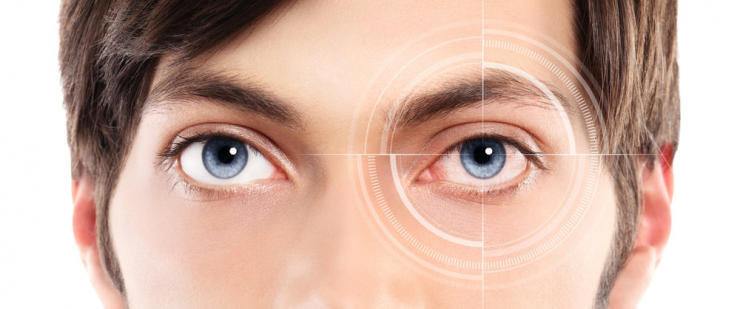Iridex’s (NASDAQ:IRIX) flagship Cyclo G6 platform for the treatment of glaucoma utilizes a proprietary method of delivering laser therapy, known as MicroPulse, and disposable probes across the continuum of care for the disease.
“Our proprietary MicroPulse allows tissue to cool between laser pulses, minimizing or preventing tissue damage. As a result, treatment risks are reduced or eliminated, with compelling clinical outcomes,” Atabak Mokari, CFO and VP of corporate development, says in an interview with BioTuesdays.
“MicroPulse is a differentiated and disruptive new technology that is transforming the treatment of front and back of the eye diseases,” he adds.
Iridex launched its legacy laser technology more than 20 years ago for the treatment of retinal tears and detachments. “This is a mature market that contributes about half of our revenue today to help fund the rest of the business,” Mr. Mokari says.
Over five years ago, the company launched its MicroPulse medical retina laser system for the treatment of the most common retinal diseases, such as diabetic retinopathy, a potential market opportunity of $9-billion.
Iridex has sold more than 700 medical retina systems in more than 65 countries, where some one million patients have been treated. “While this represents a nice growth opportunity for us, the medical retina laser business is currently a capital equipment only platform,” Mr. Mokari notes.
MicroPulse allows tissue to cool between laser pulses, minimizing or preventing tissue damage. As a result, treatment risks are reduced or eliminated, with compelling clinical outcomes.
All of which leads to Iridex’s launch in March 2015 of its Cyclo G6 platform for glaucoma, which is based on a next generation MicroPulse laser and disposable probes that work only with the company’s laser to lower intraocular pressure (IOP).
Mr. Mokari says the simple, yet effective repeatable procedure can be performed in a doctor’s office, operating room, or in conjunction with other procedures, like cataract surgery.
“This is a scalable razor/razorblade platform, where we see our future business growth,” he adds.
Glaucoma is a leading cause of blindness, resulting from high IOP, which effectively squeezes and damages the optic nerve. High IOP results from a build up of aqueous humor fluid, which has not drained properly from the eye.
There are some 65 million people worldwide with glaucoma, representing a $5-billion market, with eye drops accounting for 90% of the market. Of the total incidence, 17 million people have been diagnosed with glaucoma, of which about five million people currently are on multiple eye drops.
Early glaucoma studies conducted by independent collaborators at the National University Hospital of Singapore demonstrated a 33% reduction in IOP at 18 months with Iridex’s MicroPulse system and MP3 probe, as well as reduced use of eye drops. A follow-up study also demonstrated a 43% reduction in IOP at 78 months.
“These outcomes have been replicated in additional studies at institutions like Wills Eye Hospital in Philadelphia, UC San Francisco and Yale,” Mr. Mokari points out.
Citing the continuum of care, he says there are shortcomings with current glaucoma treatment options.
For example, only about 50% of patients remain compliant with complex dosing regimens of eye drops. Traditional laser treatments have a high rate of failed IOP control after 12 months, and the long-term efficacy of stent devices is unclear. Invasive surgery also has limited long-term efficacy as well as high complication and failure rates.
“Our G6 system offers compelling solutions across the continuum of care for glaucoma,” Mr. Mokari contends. “It is non-incisional, easy to perform, repeatable, titrateable, durable, safe, cost effective and provides attractive reimbursement for physicians and clinics.” Reimbursement has been established with permanent U.S. CPT codes used to bill outpatient and office procedures.
The strategy seems to be working. Since the launch of the Cyclo G6, the company has sold almost 500 systems and 35,000 disposable probes.
“The G6 platform continues to outperform our expectations in terms of both systems sold and disposable probe utilization,” Mr. Mokari points out. “The G6 platform is rapidly transforming our business and the treatment of glaucoma as evidenced by continued strong market acceptance of our products and clinical feedback from our customers.”
The Cyclo G6 has received broad global support, with sales in 40 major countries and approvals pending in China and Japan. The company is bolstering its commercial infrastructure with plans to increase its U.S. direct sales force to 24 representatives, from 13 currently, over the next few quarters.
In an initiation report at the end of December, Roth Capital Partner analyst Chris Lewis wrote that Iridex is in the early stages of a meaningful value driver with its G6 MicroPulse platform for glaucoma that “we expect should accelerate top-line growth and expand gross margins over the coming years.”
He expects the most meaningful opportunity will be the revenue stream from the disposable probes, forecasting $20,000-to-$25,000 of annual probe revenue per system at 80% gross margins.
He rates the stock at “buy” with a price target of $20. Iridex closed at $13.73 on Friday.






